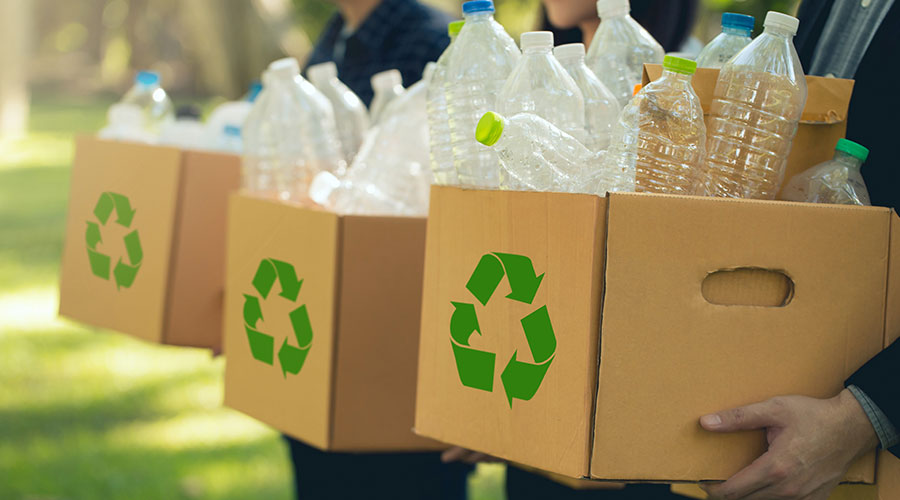Water Efficient Mechanical Systems and Irrigation Systems
Building mechanical systems also are large users of water, particularly central heating and cooling systems. To keep heat transfer surfaces clean and operating efficiencies high, boilers and cooling towers require large quantities of fresh water to keep concentrations of contaminants within acceptable levels.
Even when the automatic controls that maintain how much water is being introduced into and bled from the systems are operating properly, the volume of water required can be large. When these controls malfunction, large quantities of water can be unnecessarily introduced into the systems, increasing both water use and chemical treatment costs. And unless these systems are closely monitored, these losses can go undetected for a long period of time.
Regular inspections and maintenance can reduce the chances of this type of malfunction. Additionally, installing water meters on the make-up water piping and monitoring water use on a regular basis will rapidly detect any deviation from normal use levels.
Non-recirculating refrigeration systems offer other opportunities to reduce water requirements. Non-recirculating systems have once-through heat exchangers that use domestic water to remove heat. Popular in applications with walk-in cooling boxes and freezers, these systems require large quantities of cooling water. If controls malfunction, water use will increase significantly.
Identify all non-recirculating cooling systems installed within the facility. Each can be replaced with individual water or air-cooled systems, or can be combined into a central system with a cooling tower. Both types of systems offer water savings of 90 percent or more.
Irrigation System Savings
For some facilities, the single largest user of water is the irrigation system. Reviews of irrigation system operations show that on average, these systems waste approximately 40 percent of the water they use. The key to minimizing water use in existing systems is to limit watering schedules and volume to just what is needed, where it is needed, and when it is needed.
For example, watering schedules cannot be set and forgotten. Water requirements change over the watering season with changes in daily temperatures, wind speed, humidity, and length of day. Setting and forgetting watering schedules not only wastes water but can actually damage plants by overwatering.
Watering schedules can be automated through the use of smart controllers. Smart controllers monitor environmental conditions, and adjust the watering schedule to reflect these conditions. Not only do smart controllers keep the irrigation system off when it is raining or just after a rain, they regulate the quantity of water being supplied based on actual requirements. Smart controllers on average reduce irrigation system water requirements by 30 percent.
Another way to reduce irrigation system water requirements is to follow the recommended watering rates for the types of plants in each area. Ideally, the irrigation system should be divided into separate zones based not on location, but rather, on watering requirements.
Maintaining the Savings
Maintenance also goes a long way in reducing irrigation system water requirements. Sprinkler heads and lines can be damaged by vehicles and lawn care equipment. Leaking heads and lines not only waste water but can also damage plants. A good practice is to walk the entire irrigation system at least once a week, looking for signs of problems, including leaks, poorly adjusted heads, and runoff from over irrigated areas.
Good planning during the design stage can also reduce irrigation system water requirements. When developing a facility’s landscaping plan, select as many native plants as possible to reduce watering requirements.
One additional element that is critical to a well-planned and implemented water efficiency program is maintenance. While proper maintenance includes the obvious steps of finding and fixing leaks, it also should include steps such as checking and calibrating pressure fittings and valves. Facility managers should use a dye test on all water closets at least twice each year to test for leaks.
And finally, at least once each month, record the water use through the building-wide meter during a period of low or no occupancy for one hour. Track this use month to month. Investigate any unusual use.
James Piper, PhD, PE, is a writer and consultant who has more than 25 years of experience in facilities management. He is a contributing editor for Building Operating Management.
Related Topics:














